At first glance, the story of Carnival of Souls doesn’t seem like anything special. In fact, if anything, it seems a little….off. Almost empty, at times. Unlike many of the other movies we’ve looked at in the past months, in Carnival of Souls, there is only one storyline, focused on exactly one character, and even that seems rather loose at times, unfocused. The entire movie has a very meandering feel to it, despite its single, if vague, plot.
I’ll show you what I mean. Let’s take a look at the story of Carnival of Souls. (Spoilers below!)
The story opens on three women in a car, driving along the road. A car with a few men in it pulls up alongside, challenging them to a drag race. The women agree, and the cars take off. Before either group can be declared a winner, the race comes to an abrupt end when the car full of women goes out of control, off a bridge into a river.
The police dredge the river for hours, unable to find the car (or the women) in the fast-moving river. All hope seems lost, until one of the women, Mary Henry, clambers up onto the bank, muddy and shaken, but seemingly unhurt, with no memory of how she managed to survive.
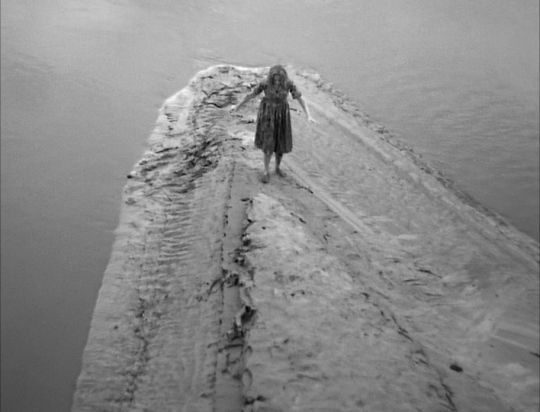
Mary, the lone survivor of the accident, seems to move on, taking a job as a church organist in Salt Lake City, Utah. Before she leaves, she returns to an organ factory in town, beginning an impromptu concert for one of the workers there. Impressed, the worker suggests that she come back and play again for them sometime. Mary stands and begins to leave, stating coldly that she has no intention of ever coming back.
Already the opening to this film is really strange. The car chase is portrayed as more eerie than exciting, and Mary doesn’t seem to have a lot of presence as a character. She is cold, emotionless, likely traumatized as a result of the accident. The entire beginning doesn’t seem horrific, just…odd. The camera usage only emphasizes the isolation and outsider nature of Mary’s character, made even clearer later in the film.
Mary sets off on her trip, and while driving through the desert, her radio seems to malfunction, only picking up organ music. Bothered by this, she is further unsettled by visions of a pale, ghoulish figure who appears in her car window. As abruptly as he came, the figure disappears, only to materialize again in the road in front of her. Panicked, Mary drives off the road, collecting herself as the figure (only referred to as The Man) vanishes again, without a trace.
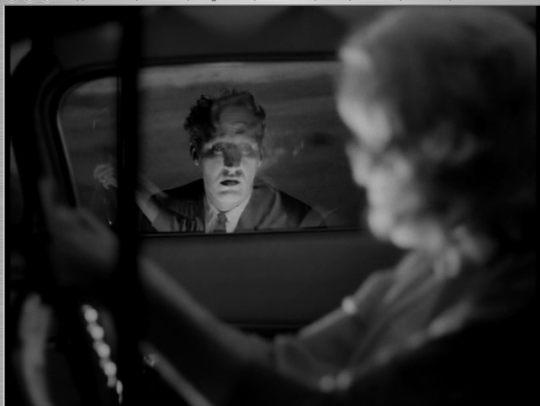
Resuming her journey, Mary finds herself drawn to a strange, abandoned pavilion on the outskirts of the town. Curious, she stops at a gas station, asking the attendant for information about it. The attendant tells her that the structures used to be a bathhouse, then a dance hall, and finally, a carnival, before it closed.
Shaken, but still determined to get her job, Mary rents a room at a residence owned by an older woman named Mrs. Thomas, and meets the only other tenant, a distasteful character named John who is determined to become better acquainted with her. Her first day in the new city passes mostly uneventfully. She travels to the church she is taking a job at, meets the minister and practices on the organ. The minister offers her a ride, and she agrees, asking him to take her to see the abandoned carnival on the outskirts of town. He agrees, and he drives her to the gated entrance.
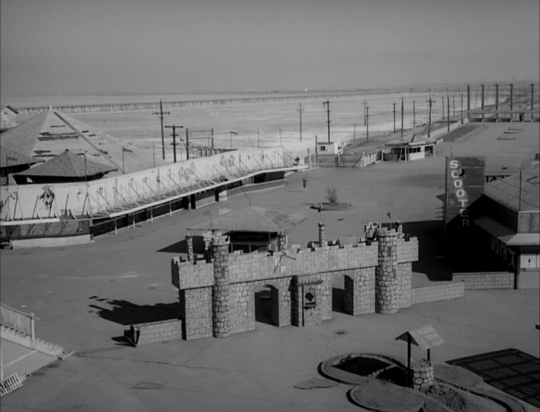
Mary wishes to go in, but is stopped by the minister, who explains that nobody is allowed to enter. Subdued, but not satisfied, Mary returns to town. While in the boarding house, she believes that she again sees The Man, and flees to her room in a fit of hysterics. The landlady, Mrs. Thomas, comes up to offer her a dinner, assuring Mary that she must have imagined the figure. Despite her attempts to comfort Mary, Mrs. Thompson clearly believes Mary is disturbed, and leaves Mary alone. Mary passes the night dreaming of the pavilion.
The next morning, the tenant John turns up at her door, offering to share a coffee. The two talk for a few moments, and Mary explains that she views her job at the church as just that, a job. She thanks John for the tea, and sets off to the store to buy some new clothing.
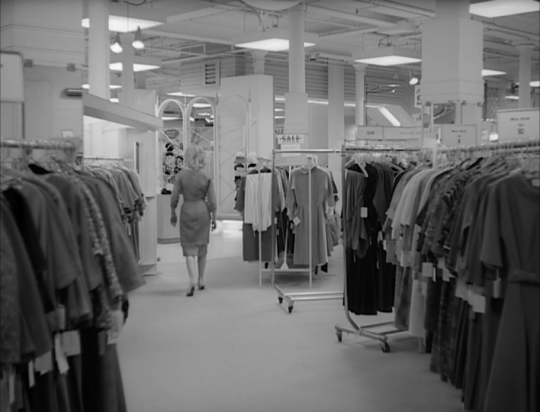
While at the shop, she has a peculiar experience. After trying on a dress and emerging from the changing room, Mary notices that it seems like the sound of the world has been turned off. She can see people speaking, but she cannot hear them, and nobody can see or hear her. She seems disconnected from the world, and, frightened, she wanders outside. After a few moments, the sound seems to ‘switch’ back on, and, relieved, Mary goes for a drink at a water fountain. As she rises, she recoils in fear, believing herself to see The Man. Panicked, she turns, running into another gentleman who offers to help her.
This time, it is not The Man whom she sees, but a stranger. The helpful gentleman she has run into turns out to be a doctor, and offers to assist her. Taking her into his office, the doctor listens to her story and suggests that her visions of The Man may be a result of trauma from the accident. The doctor asks if The Man resembles anyone that she knows. Upset, Mary declares that she has never seen him before. Feeling that The Man is somehow connected with the carnival that she has been so drawn to, Mary decides to visit the place and put an end to her visions.
If it were me, I’d take a new job as far away from the carnival as I could, but obviously I am not the protagonist of a horror film.
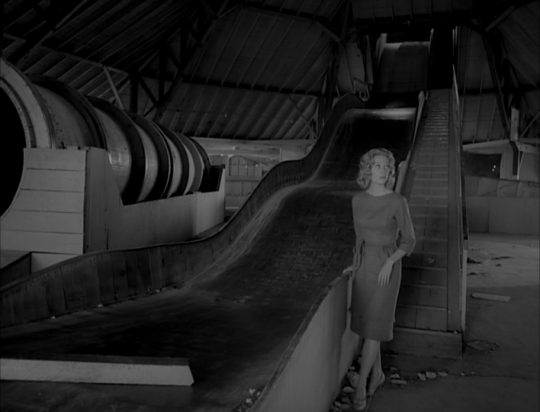
Mary arrives at the pavilion, and although there are strange sounds and movements, overall, nothing really happens. Somewhat calmed, Mary returns to the boarding house, where John offers to take her to dinner. Mary agrees, telling him to pick her up after she practices the organ at church.
As Mary practices, she seems to fall into a trance, her stately hymn transforming into a wild, eerie song. As she plays, she is overcome by another vision, that of ghouls rising from the water to dance in the pavilion to her music. The creepy tune disturbs the minister to the point of forcing her to quit her job, and Mary wordlessly leaves for her dinner date.
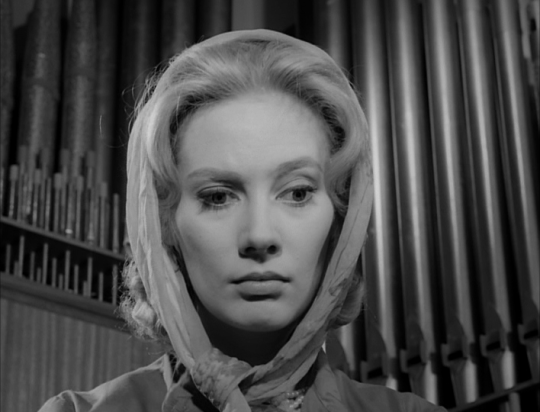
During her date, Mary is distant, cold, and unresponsive to John’s attempts at flirtation and conversation. Frustrated, John takes her home, following her to her room and attempting to further their evening. Mary catches a glimpse of John in the mirror, and thinking she sees The Man, flies into another hysterical outburst, screaming for John to get out. As John leaves, Mary changes her tune, immediately crying out that she does not want to be left alone. (Frankly, I’d rather be left with The Man than John, but that’s simply a matter of opinion.)
The following morning, the doctor that Mary had met earlier comes to the boarding house, speaking with the landlady about Mary. Mrs. Thomas informs him that Mary was moving furniture around all night, and refused to let her in that morning. She explains that she no longer wants Mary lodging there.
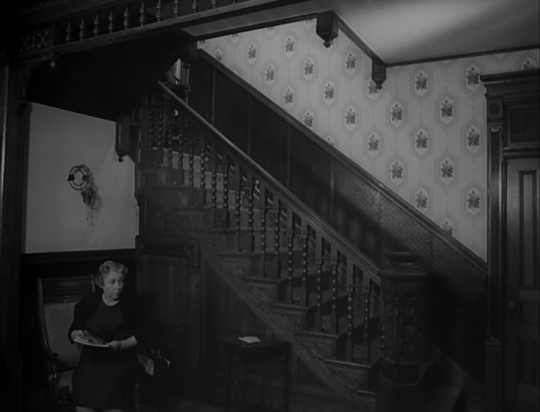
Mary packs her bags and leaves the house, silent despite Mrs. Thomas’s attempts at communication. Getting in her car and preparing to leave town, her progress is stalled by a bad transmission. Taking the car into a service station, Mary refuses to leave the car, staying in the driver’s seat as the vehicle is put onto a lift. As the attendant leaves to deal with another vehicle, Mary is left alone.
There is the sound of a door, and footsteps. A hand turns the valve for the lift, and Mary’s car is lowered, and the doors fly open. Frightened, Mary leaves her car and takes off down the street. As she runs, she discovers that she is having a similar experience to that of the store earlier: she is invisible to the world around her. Terrified, she runs to a bus station to try to buy a ticket. While still invisible, a voice over the loudspeaker announces a departing bus. Mary heads towards gate nine, where the bus is supposed to leave from, rushing onto the vehicle, full of the undead ghouls from her earlier visions.

Mary flees the bus station, returning to the park as she seems to pop back into existence. She hurries to the doctor’s office, where she explains desperately that she believes she is going insane. The doctor’s chair, previously turned away from her, swivels to face her, revealing The Man.
Mary screams in horror, and wakes up in her car, having just been lowered from the lift. Mary throws the car in reverse and tears out of town, heading straight for the carnival. Entering the pavilion, she is greeted by the images from her vision: the ghouls dancing to eerie organ music. Among their number is a ghoul that looks like Mary, a ghostly doppleganger dancing with The Man. Mary turns, trying to get away, and is chased down by the entirely horde. They corner her on the beach, where she falls, overwhelmed.

Hours later, all that is left is her car at the carnival gates and a series of footprints in the sand that abruptly end, with no trace of Mary herself.
Back in Kansas, the police have finally found the car. As they tow it out of the water, they look inside and discover the bodies of three women.
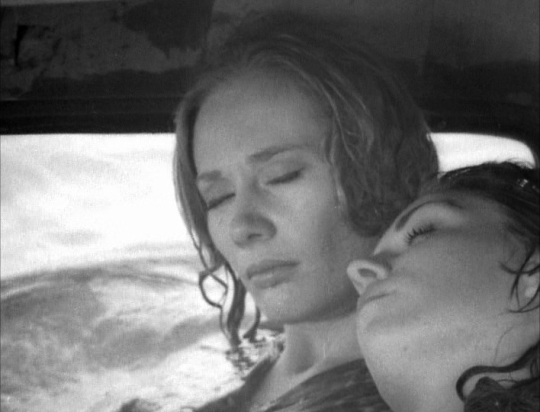
Mary has been dead the entire time.
Is it a surprise? Not especially, but it kind of still works.
Carnival of Souls shares more than a few similarities with The Twilight Zone episode: ‘The Hitchhiker’, also following a young woman stalked by death who has been dead from the beginning. But where The Twilight Zone portrayed ‘death’ as a harmless, friendly helper, Carnival of Souls portrays the pursuit of death as terrifying, a silent stalker. While neither portrayal is ‘better’ than the other in and of itself, there’s certainly something to be said for the context in which death is portrayed, especially in Carnival of Souls.

Throughout the entire film, there is a very clear sense of unbelonging. While it’s made very obvious in the scenes where Mary cannot be seen or heard by anyone around her, there are other, more subtle elements in the film that give off the distinct impression that Mary is not supposed to be here. The ominous organ music, her odd periods of distant behavior, even the people around her seem ‘not right’ at times. Throughout the film, Mary is alone. There are no characters who understand her, nobody she can go to. She is thoroughly isolated, with more in common with the ghouls who pursue her than the people she is around.
In that sense, with the cold feeling of isolation, distance and fear, it makes sense that death should come as something terrifying.
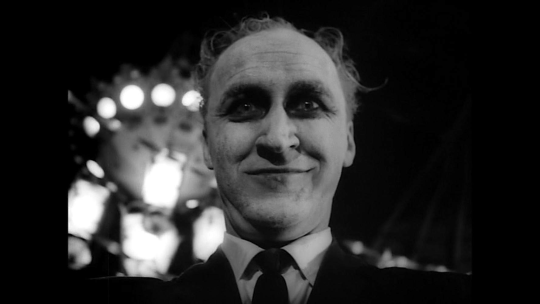
Despite the sense of dread that surrounds The Man’s pursuit, by the end of the story, it’s unclear as to whether or not he is truly a villainous character, or simply chasing Mary down to put her where she belongs.
Thanks to these clues and the simple possibility of being Genre Savvy, it’s possible for the audience to pick up on the fact that Mary is already dead rather early in the story. As a matter of fact, from the moment Mary clambered out of the river, I had already figured out the twist. It’s not a difficult surprise to see coming, but that doesn’t make it bad.
The fact that you can see a twist coming doesn’t make it a bad twist. As a matter of fact, it often makes it a good one. A well-laid plot twist will have hints sprinkled throughout the rest of the film, and such is the case for Carnival of Souls. Mary exits the river hours after the wreck, unhurt. She has periods where she is almost nonexistent. She swings between emotionless and hysterical. She seems to fade in and out of reality, swinging back and forth between being ‘there’ or not.
So, the twist ending is satisfactory. It’s built up to in a way that makes sense, but there’s something that still seems a little off: Mary doesn’t have a character arc. At all.
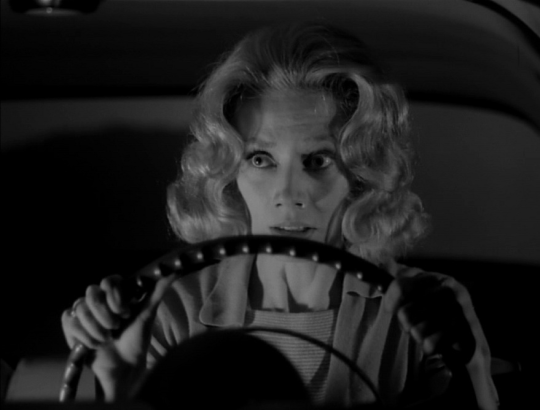
In most of the other films that we’ve looked at, the protagonist changes from the beginning to the end, or learns something. Dorothy learns that ‘there’s no place like home’, and gets agency. Rick Blaine learns to be an idealist again, looking at the big picture. Phillipe becomes less selfish.
However, Mary Henry doesn’t learn a thing. She never even finds out that she’s dead.
Mary remains the exact same person at the end that she was at the beginning, or at least, since she emerged from the river. (She had no visible personality to speak of beforehand, so that doesn’t count.) She doesn’t learn to be more open, and she does not become closed off. She is stuck in a limbo between the two, just as surely as she is trapped between life and death. As such, we never really get a handle on her character, or her personality, and as a result, we never see any growth or change. She only becomes more and more frightened and desperate as the film goes on, until, abruptly, she is no more.

Again, not really a surprise when you put the movie in context.
Again, it all comes back to that twist ending. Mary’s personality and interactions with people serve as more hints to her true nature. She never develops as a character because she is already dead. People’s interactions with her, (often uncanny) serve as more hints, especially the minister’s declaration that Mary doesn’t have a soul.
Mary’s character arc is never seen in the movie because the second she emerges from that river, her story has already ended. All that’s left is for her to wander in limbo, no longer belonging in the world of the living. The ‘growing’ element of the story is the suspense, the pursuit of The Man, and the audience’s realization of what is going on.
Is it traditional storytelling? No, but again, that doesn’t necessarily make it bad. Just different.

Despite (or perhaps because of) Carnival of Soul’s very uncanny tone and odd structure, it comes across as a very atmospheric film with an engaging, if odd, story and a memorable twist that was truly one of the first of its kind. It’s weird feel and design is memorable, if not the tightest written, a clear indication of the reason for its popularity in the years following its release. In the end, Carnival of Souls is a surprise ghost story, where the protagonist is both haunting and being haunted, and in that, there’s something truly unique.
In the articles ahead, we’ll be taking a look at some more of the aspects of Carnival of Souls, so please, if you enjoyed this one, stick around for next time! If you’d like, don’t forget that my ask box is always open. Thank you guys so much for reading, and I’ll see you all in the next article.
One thought on “Carnival of Souls: The Story”